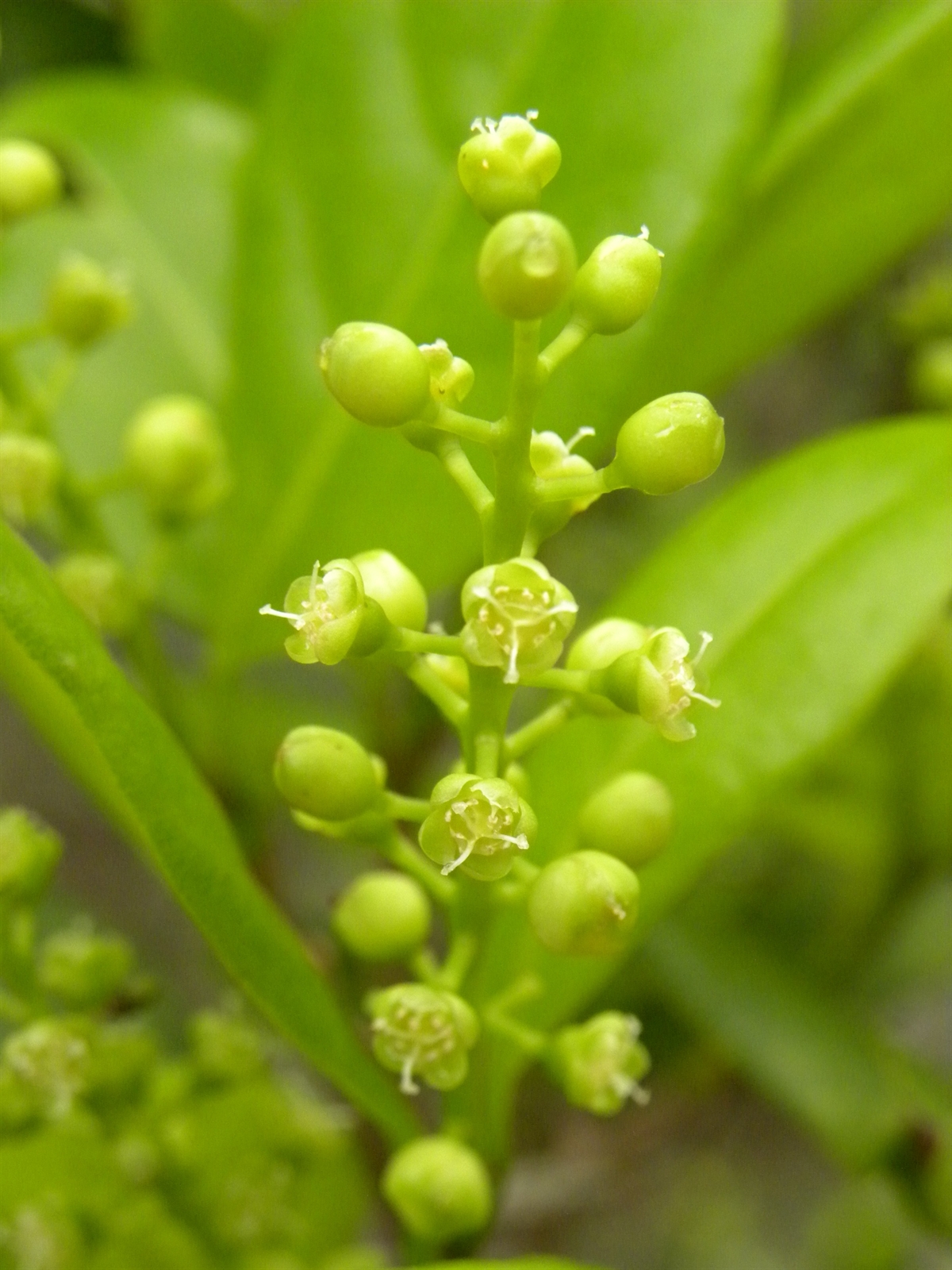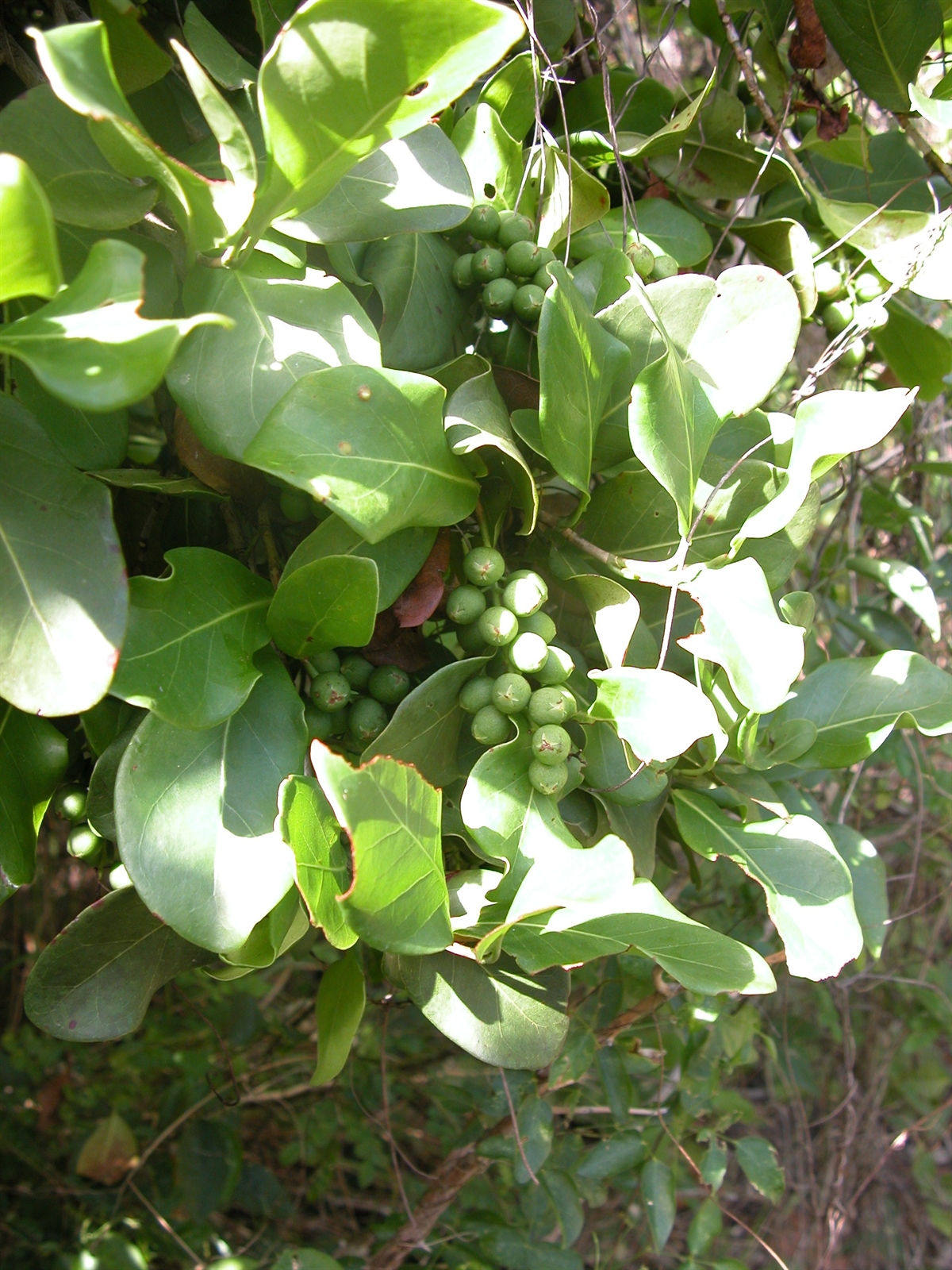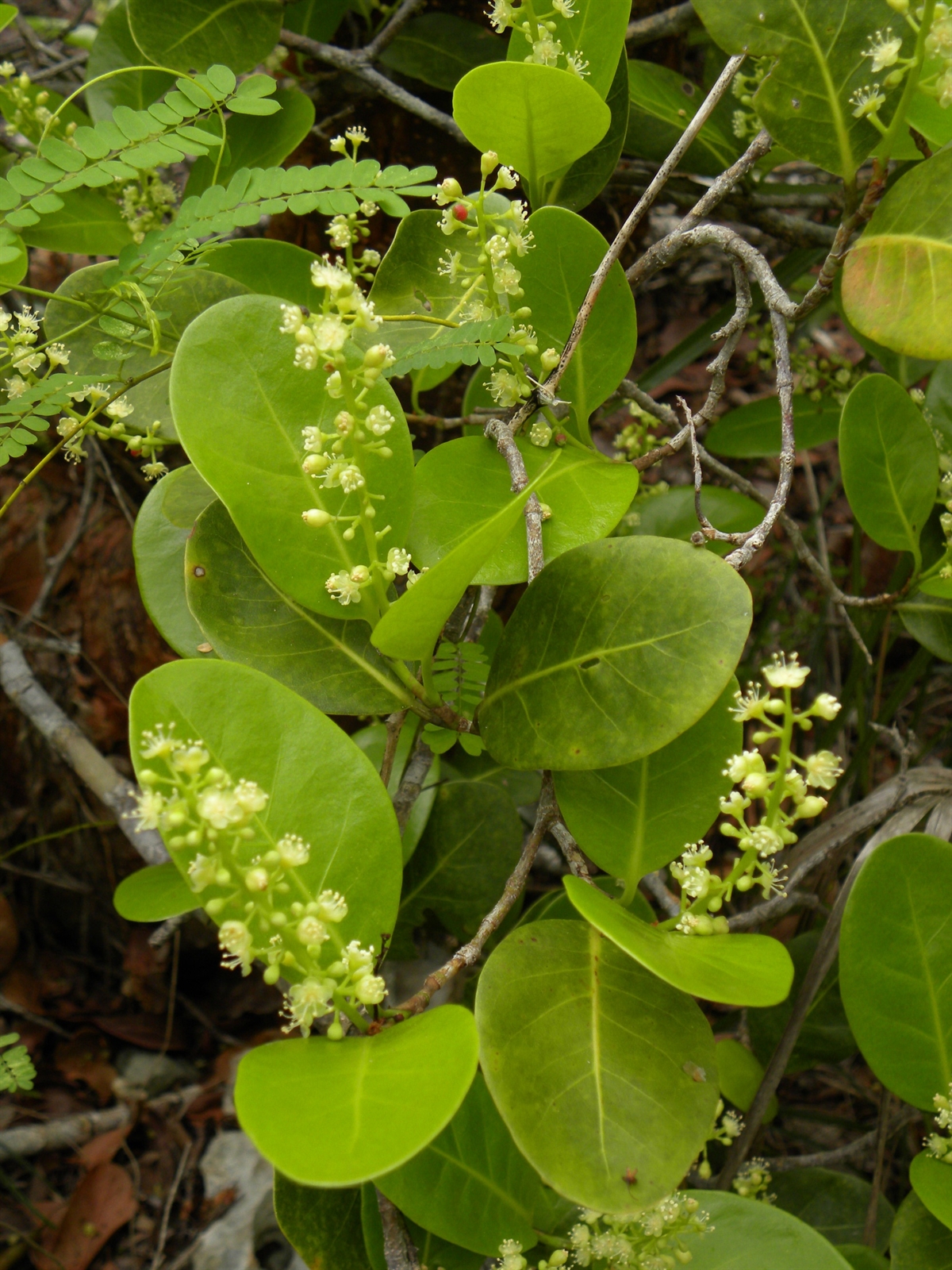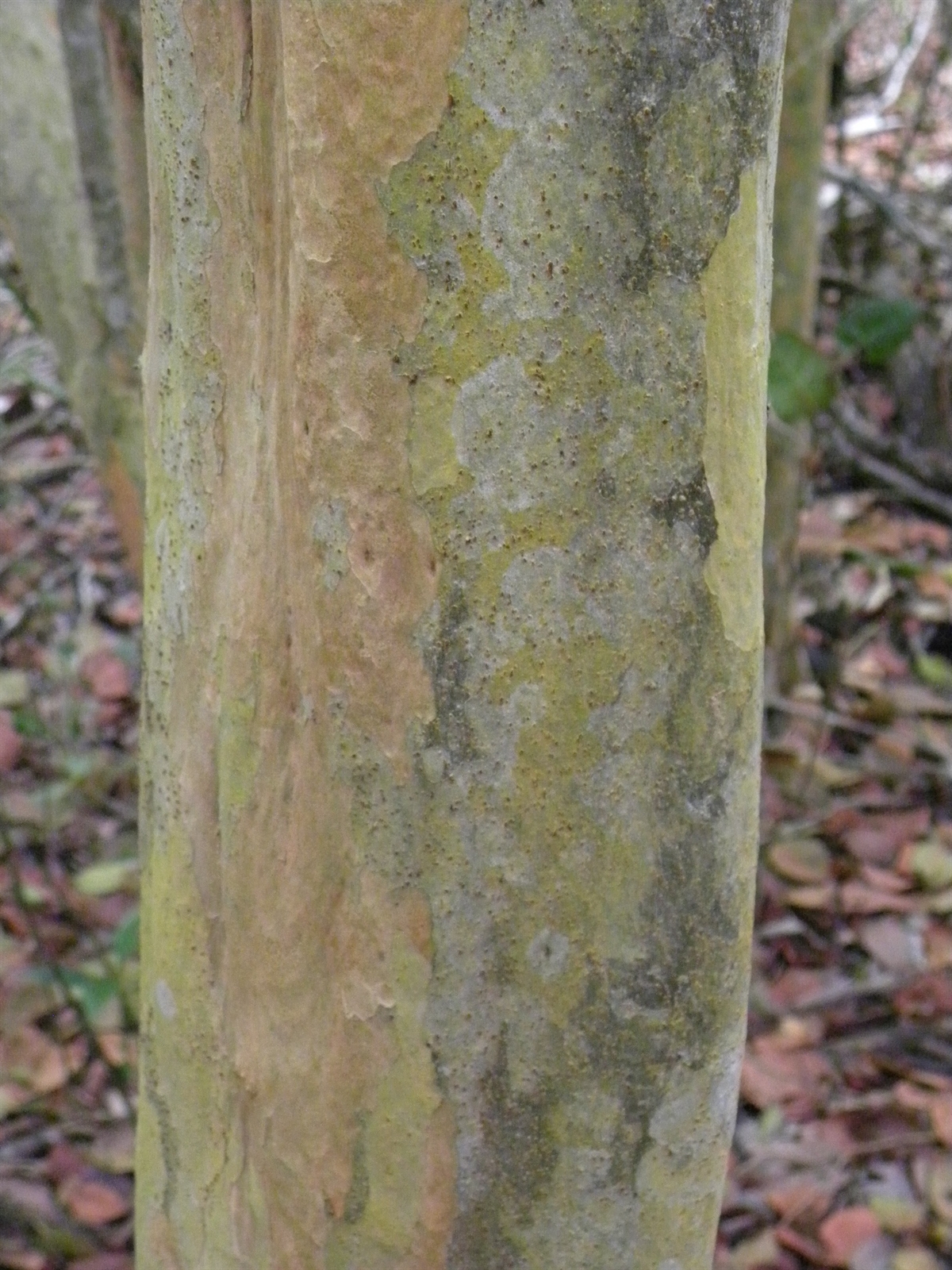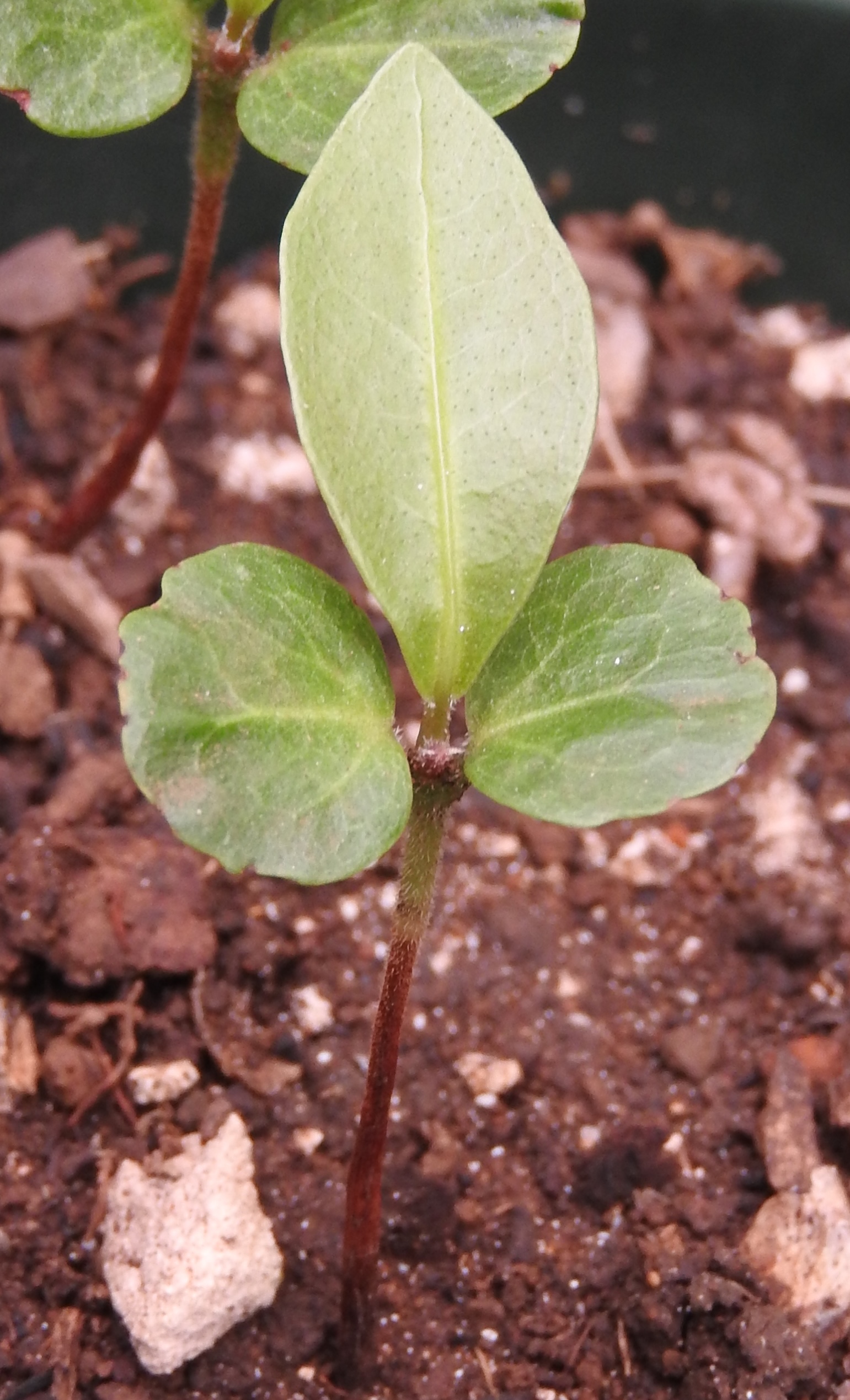Habit: Coccoloba diversifolia grows as a medium shrub to large tree up to 10 m in height and 60 cm in diameter. The trunk is grey and brown (sometimes slight orange) with pieces of bark flaking off in jigsaw puzzle like pieces. The leaves are arranged alternately, up to 25 cm. the leaf shape is highly variable with shade and adventitious shoot leaves large, elongate to lanceolate and sun leaves small and elliptical. The petiole base wraps around the stem at the leaf axil forming an ochrea.
Coccoloba diversifolia is dioecious with the incomplete, imperfect, flowers arranged in racemes. The perianth contains only the calyx which has 5 whitish green sepals fused at their base forming a shallow cup. Staminate flowers have 8 fertile stamens fused to the rim of the calyx cup. Carpellate flowers have a superior ovary with a single locule and ovule. Around the base of the ovary is a nectary. Staminate flowers can be distinguished from carpellate flowers by the size of the stamens. In staminate flowers the stamens are fully exerted and 2-3 times the length of the entire flower. Additionally on the staminate inflorescences there are numerous flowers at each node. The fruit is a drupe turning dark red to purple at maturity.
Habitat: Coccoloba diversifolia grows in a variety of habitats including Dry Broadleaf Evergreen Formations –Forests/Woodlands/Shrublands/Dwarf Shrublands (coppice) on both limestone and sand substrates. It also occurs in Pine Woodlands.
Distribution: Coccoloba diversifolia occurs on all island groups within the Lucayan Archipelago, southern Florida, the entire Caribbean region and Central and South America.
Medicinal/Cultural/Economic usage: Coccoloba diversifolia is used in the Lucayan Archipelago to treat gastrointestinal problems (diarrhea) and as a component of the soothing and aphrodisiac teas. The fruits are edible (raw, as a jelly or used to make wine) and the wood has been used for carving. The fruits support a diverse avian population as well as iguanas (where they occur).
Coccoloba diversifolia is used extensively in the horticultural industry of southern Florida.
